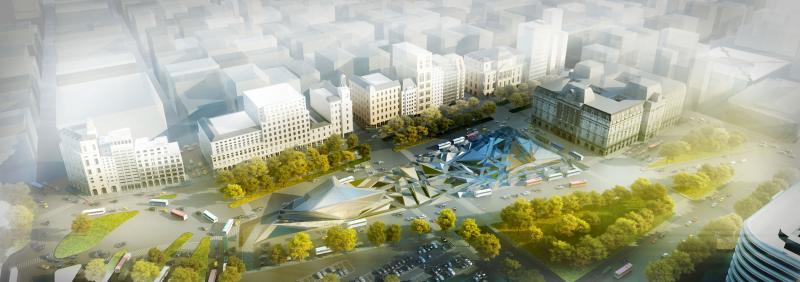
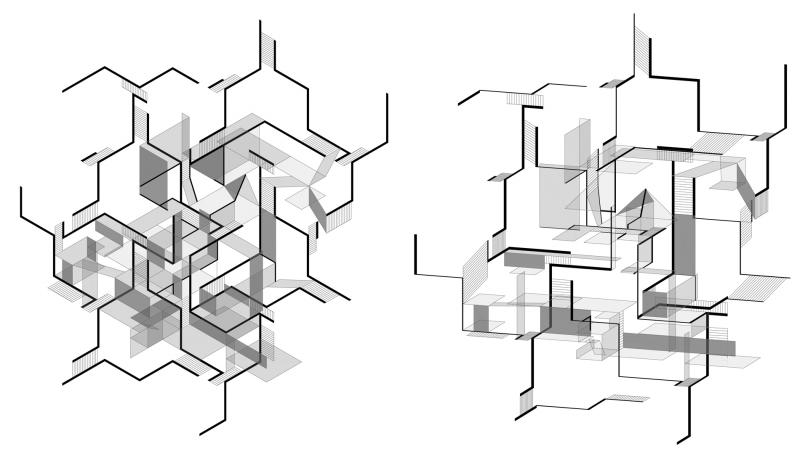
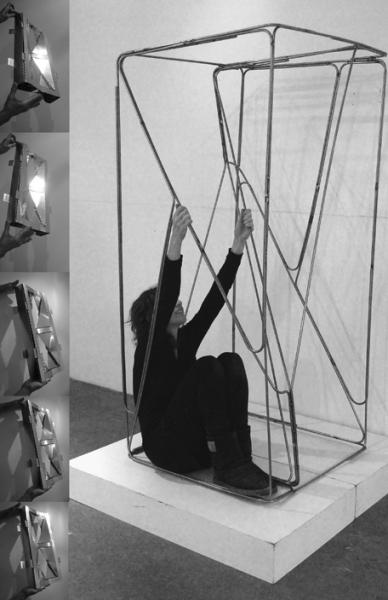
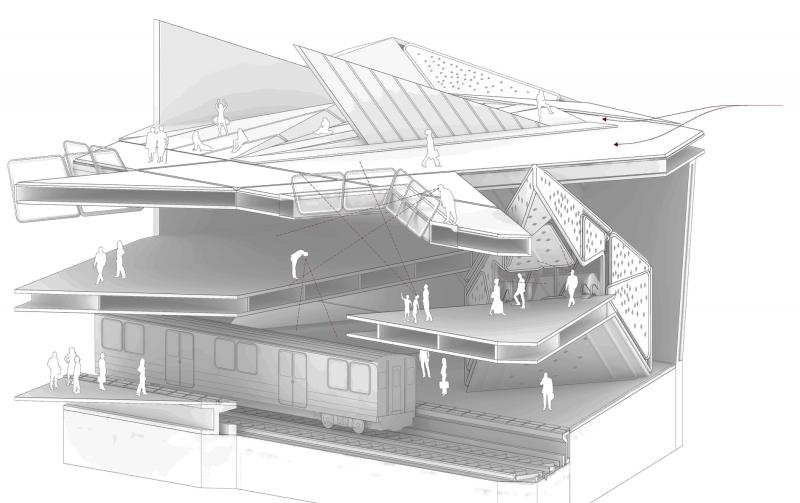
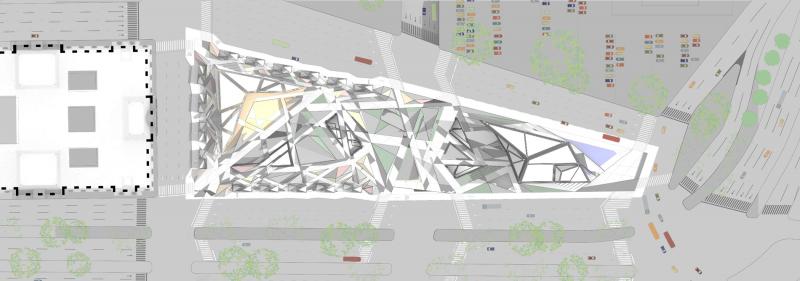
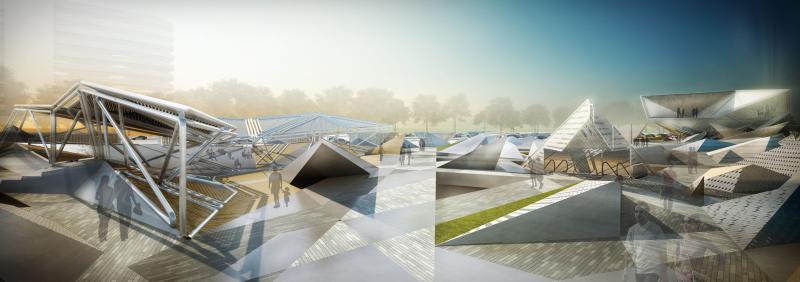
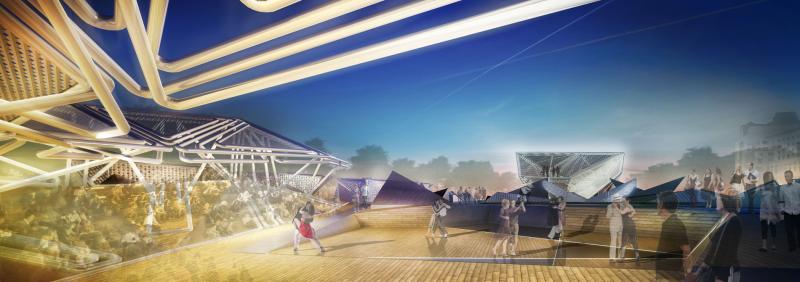
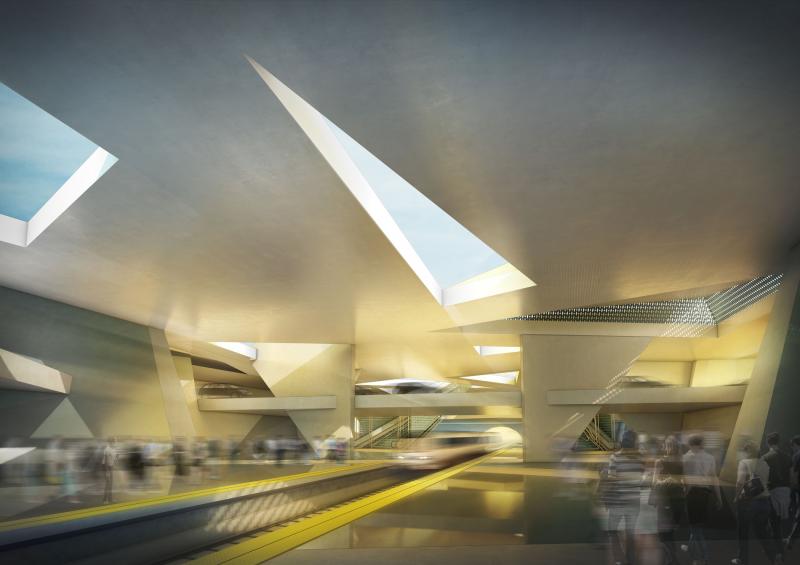
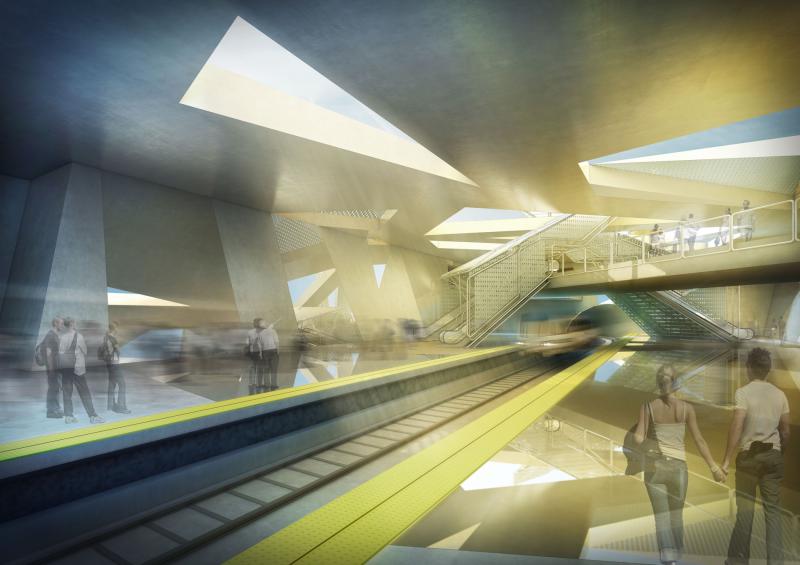

Tango Transport is a new type of public space for a contemporary city that provokes public interaction to reawaken the thinning cultural identity of Buenos Aires. In the specific cultural context of Argentina, the project explores Tango dancing to choreograph the rhythms of people circulating around the city and the cultural activities that they engage in.
Spatial juxtapositions, material transparencies and effect qualities explored through physical models and drawings of isometric projection [1], become the architectural grammar of the proposal. Isometric projection allows the re-interpretation of three-dimensional arrangement and organization of the rhythmic composition.
The experiential qualities of fluidity are translated into the physical word by the employment of a digital fabrication methodology, utilizing KUKA Robotics and steel rod bending apparatus to manufacture the space frame. Water jet cutting and folding of sheet metal transforms the planar material to achieve volumetric qualities, forming the infill material enclosure. Set within the space frames it delivers flickering lighting effects as the occupant moves through the structure. In the same way isometric drawing questions spatial arrangement, the architecture reveals the ‘unexpected’ through movement.
Composing a cultural center, the project organizes a new transport hub located strategically near the river La Plata, in the midst of the financial and cultural center of Buenos Aires. Using the transport hub to as a catalyst to generate flows of people, the project will attract users to experience a new mixture of programs that are interwoven to promote public attention and interaction.
[1] Flatland by Edwin Abbott Abbott and The function of the Oblique by Claude Parent are particularly relevant texts that question the relationship and transformation from one dimension to the next. The drawing investigation takes these ideas as a foundation to explore how drawings can be re-interpreted and they question relationship to the ground plain.